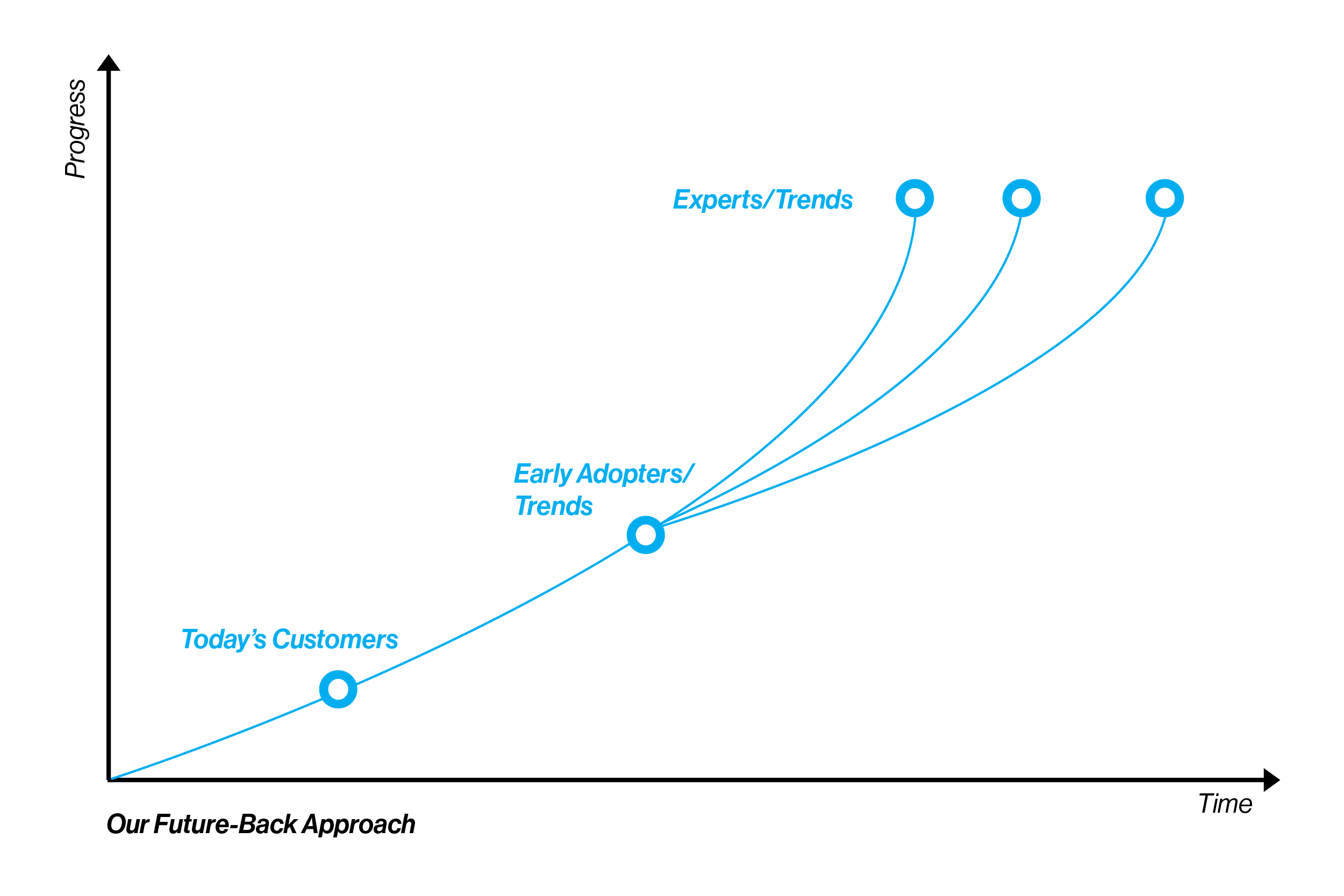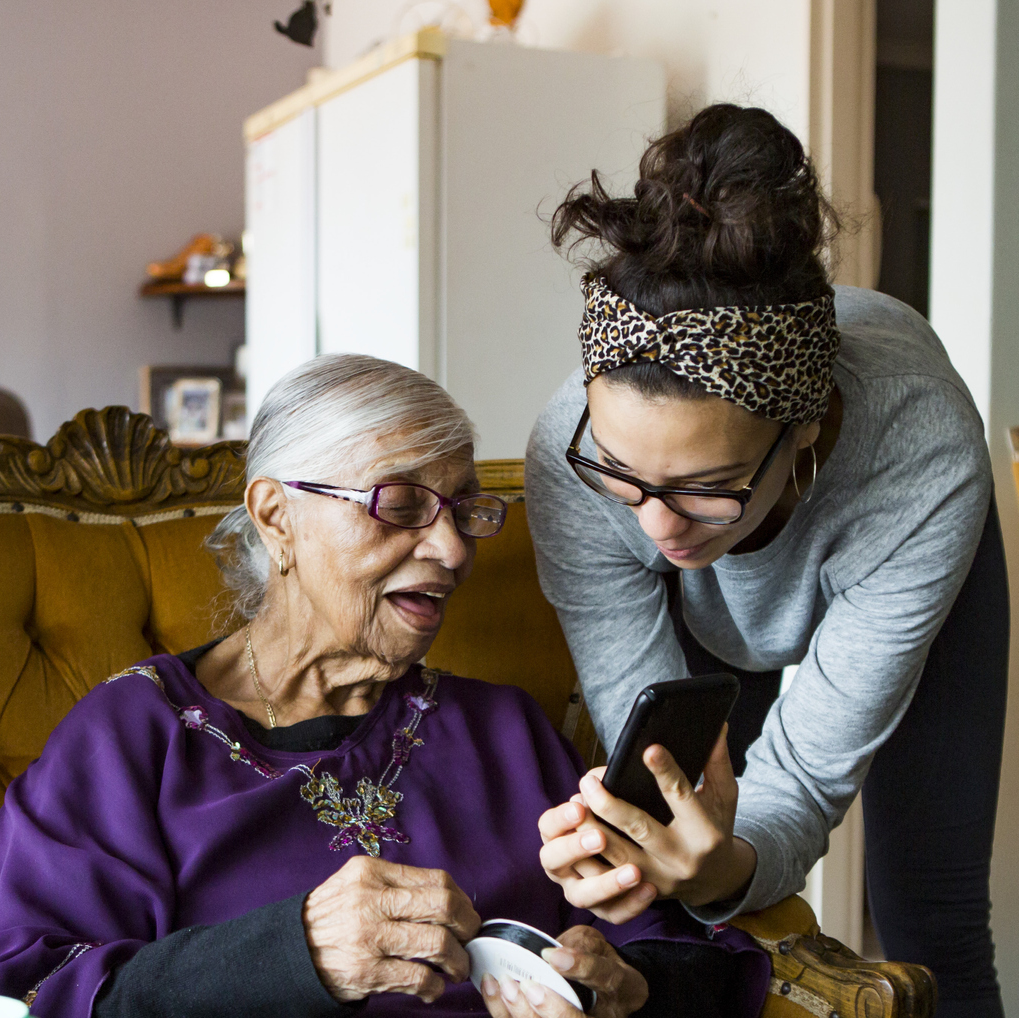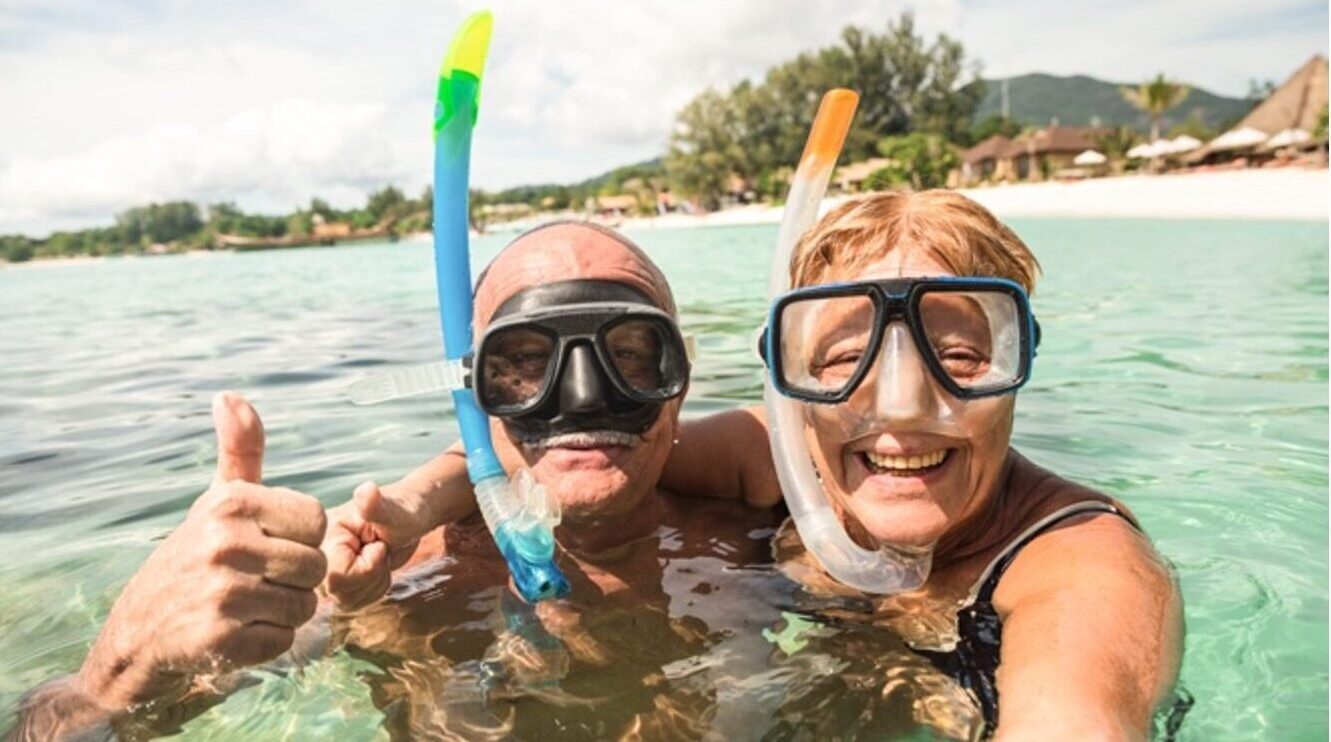WHITEPAPER SERIES
Foresight Principle 1
Create trajectories, not only destinations
By its nature, Foresight is hyper hypothetical, but layering human needs can provide clarity and focus. We argue that to move ahead with conviction and to stay relevant, Foresight is not an exercise of projecting forward but working backward.
This is part one in a three-part series in which we argue that consumers are just as important as experts, trends and AI predictions in helping brands minimise risk in Foresight strategies. Scroll down to navigate to another part within the series.
Experts traditionally lead Foresight and a body of fascinating literature exists that helps us think about prediction in a robust, scientific way. Lately, data has been increasingly leading Foresight with predictive AI in full bloom — with models being able to work from larger data sets, connect more dots and be more accurate in identifying future patterns.
But there are challenges with simply relying on experts and AI.
Many still see Foresight as a pseudoscience and consider predicting the future as more of an art than a real discipline. The extreme reliance on expert opinion creates challenges in itself: Where does the opinion come from? Is this a peer-reviewed, scientifically established perspective or a gut feeling based on experience? Worse still, as Oskar Korkman, Co-Founder of Alice Labs Partners & former Director of Insights at Nokia, puts it: “experts are so close to technologies that they have a huge bias. Their predictions are more expressions of the industry, rather than expressions of actual market change. In a way, they’re self-fulling prophecies”.
And when it comes to machine predictions, they are still dependent on the data sets they work from, and they still rely on human inputs — which is why, for instance, people are worried about AI models replicating the racial or gender biases of the engineers that sit behind them.

Experts are so close to technologies that they have a huge bias. Their predictions are more expressions of industry, rather than expressions of actual market change.
Oskar Korkman, Co-Founder of Alice Labs Partners & former Director of Insights at Nokia
How can brands make decisions today that will help them stay relevant tomorrow?
We argue that experts and AI both have a crucial role to play in Foresight work, but consumers remain key in helping you decide whether a trend or technology will take off — looking at whether it addresses a problem worth solving.
As Warren Minde, former Global Head of Innovation at Kantar and founder of Innovation Leap puts it: “the subdued take up of the Metaverse could have been predicted. It’s a buzzy, hyped trend, but arguably it didn’t take off partly because it overlooks the simple, fundamental truth that humans are desperate for face-to-face human connection after being starved of it during Covid.”
We believe consumers are essential in giving the right focus to foresight strategies. So how do we involved them in the process?
We call our approach “Trajectories,” and the principle is straightforward. Start from the end, and work backward.


To develop possible visions of the future, we use a concoction of trends, experts and our team of horizon scanners who stay close to the shifting macro forces. AI is increasingly essential here: Machine-learning platforms are quick, cost-effective and cover an enormous breadth, whether that’s reviewing journals and other publications mapping inspiring brand moves (we use Discover.ai), or identifying cultural patterns in social media (we use Brandwatch). These tools provide a brilliant base to complement our understanding of the changing macro forces.
Once initial scouting is complete, we bring in a range of experts — typically a blend of the following:
- Culture Specialists
People with experience in specific places, culture and codes (e.g. Korean beauty), bringing new frames for understanding human behaviour
- Deep Divers
People who study the big, intertwined themes (e.g. sustainability, mobility, luxury) in depth and bring decades of research and evidence.
- Tech Realists
People who can help us understand the tech timeline and identify what’s close vs what’s a slow burn. After all, consumers may dream of more immersive gaming experiences, but how distant are affordable VR headsets?
- Parallel World-ers
The best ideas aren’t often original, but they come from unexpected places. How did Apple come up with its Genius Bar? Steve Jobs looked for inspiration in a world renowned for excellent customer service: 5-star hotels. The key elements of the Genius Bar came directly from Ritz-Carlton service secrets. Approach with a warm welcome. Use names where possible. Anticipate unexpected needs. Parallel World-ers can transform how you think about a challenge.
- Human Behaviourists
Depending on the challenge, you might need to bring in extra expertise to help with research design, and analysis, be it Behavioural scientists, Semioticians, etc. They will help bring a new light in the way we think about emotional, behavioural or cultural patterns that can help reframe future needs in a more precise context.
This goldmine of information will help you:
1) understand the connected forces of change;
2) identify patterns and pathways in what’s already around us and;
3) align on several possible and probable future visions.
But by sticking to experts alone, we risk getting information that is deep but heavily narrow and heavily biased in what they know / hope will happen.
Experts and trends will help challenge your thinking, share possibilities, and separate the opinion-led projection from the scientifically backed ones, but they won’t necessarily help you narrow in on where to focus.
So, the next stage is to look to extreme consumers and early adopters to help us narrow down which future visions are more likely to happen, and what the pathway to that future might be.

“The future is already here – it’s just unevenly distributed ,” said the famous Sci-Fi writer William Gibson. Now that you’ve started painting a vision for what the future could hold, it’s a matter of identifying how people have started to respond to it.
Let’s call them “behavioural signals,” hacks developed by a specific group of people that show unfulfilled needs in line with a scenario that we think will occur more and more.
We (very) broadly regroup them into two categories:
- Underserved Consumers
These are consumers that brands, systems and society have historically underserved. They have been pushed to the margins and forced to develop hacks to adapt products and experiences for their own needs. They may include, non-exhaustively, people in the LGBTQIA+ community; disabled and neurodivergent people; Black, indigenous People of Colour; low-income households and more. Yes, they should be part of ALL your research projects. AND it’s often crucial to bring them into your Foresight projects, as some will have likely started solving your problem a long time ago. If you think about designing better for them, you’ll likely be designing better for everyone in the future.
- Extreme Consumers
The 1%, people obsessed with your topic, people super vocal about your topic, or even people who spend all their money and energy rejecting your topic. We started this approach with IKEA in 2016 by engaging what we called “Home Pioneers” – people with extreme living habits for whom home was everything (think living in a lighthouse, off the grid or on a boat), and we have since made it a central part of every futures project – as they will reveal new meanings and new potentials for your brand.
From this stage, you get
1) behavioural signals that help you understand which scenarios future visions are more or less likely (to avoid getting lost in a myriad possibilities) and
2) a clearer, brighter, more tangible picture of what those future visions might look like, to make it easier for brands to extract implications and plan.

To really distinguish what’s a fad versus what’s a long-lasting shift (i.e., something to act on), we need to integrate a healthy dose of consumer perspective.
We get there by examining three elements:
- Needs
Fundamental human truths, which tend to remain constant. Many models are available to map these, but we often use The Schwartz Model, which details 10 areas of human values. As a starting point, any innovation or tech trend should be filtered through these to work out what is (and isn’t) likely to last. For example, Wordle took off partly because it successfully enables connection and achievement (at a time when we all craved more connection). Similarly, it could be argued that the success of Chat GPTs partly because it speeds up people’s existing workflows, tapping into a sense of power and achievement. In contrast, voice hasn’t become the second sales channel (after mobile) despite predictions because shopping traditionally addresses people’s needs around stimulation, hedonism and connections, and a voice channel bypasses this.

- Behaviours
N ew habits, routines, or ways of engaging with the world. Consumer behaviours are observable and always in flux. And shifts in behaviour often happen in little ways. So, it’s our job to spot these signals, which often give us clues about shifting expectations .
- Expectations
Shifts in attitudes, demands or the understanding of what’s possible. These behaviour changes alter the bar for what brands can and should deliver on. Just think about people’s gradual shift in what personal information they’re happy to give away now (for a perceived value) vs. 5 years ago.
Without involving the consumer in this trajectories work, we risk planning against an uncertain future. Constantly engaging consumers at key points helps keep our feet on the ground and distinguish between a fad and a long-lasting shift.
Although we’ve set this up as linear trajectories, the reality is much messier. It’s a case of staying close to macro drivers of change, checking in with extreme consumers and experts and not detaching ourselves from consumers.
However, the latter can prove tricky: exploring futures with people is a cognitive minefield. Next, we will explore how to be creative and experimental to unlock human needs that we know will last.

A CLEAR EXAMPLE OF THESE INTERRELATED FACTORS PLAYS OUT IN OUR RECENT REPORT DWELL: EXPERIMENTS IN LIVING
Home is where life begins.
We shaped these archetypes by patterns we found across different cultures, people and homes, and we bet 90 percent of them will still be true in 2030. Here’s how we used our Trajectory Approach to construct these archetypes:
Engaging experts at the start allowed us to identify key tensions in the home. Smart-Cities expert Jonathan Reichental guided us toward the fundamental shift that humans have become an urban species, with 68 percent of humanity projected to live in urban areas by 2050. But amidst this trend, a tension emerged that we evolved as savannah dwellers, but we’re not (yet) fully fledged city dwellers.
Speaking to extreme consumers — including urban micro-farmers, tiny-home-on-wheels builders, snowbirds and circadian lighting addicts — we gathered behavioural signals that informed our eight archetypes. One consumer we spoke to indicated that we’ll go from our lights dictating how we feel to us telling lights how we feel. Another person predicted a global, indivisible mobile phone number.
We assessed these emerging trends and archetypes with our global customer community comprised of 700 consumers to qualitatively explore their vision of the future of the home and the role of brand in it. We also validated these with a nat-rep quant survey (n=5000), which also identified the expectation/reality gap for our lives at home — learning that as many as nine in 10 people say they want to experience enjoyment at home, but only five in 10 get it there.
It was through this cocktail of experiments and dot-connecting among experts, trends and different types of consumers that we arrived at our thesis that the home is increasingly becoming an enabler of success — not just a marker.
Introducing our 3 Foresight principles.

PRINCIPLE 2
Focus on what’s not changing
How do you avoid backing the wrong future strategies? We’ll argue that running consumer experiments can bridge the gap between today and 10 years’ time.
FORESIGHT
THE FORESIGHT TOOLKIT
Your ultimate companion for seamless foresight work.

Unlock the key to foresight success with our comprehensive toolkit! By downloading our poster guide and complete whitepaper, you’ll gain access to invaluable insights and practical guidance.
This toolkit not only provides an easy and digestible understanding of foresight, but it’s also the perfect resource to assist with foresight brief creation and study design for any insight function. Whether you’re penning a concise brief or crafting a captivating study, our fool proof 3 principles will lead you to success.
Don’t miss out on this opportunity to supercharge your foresight journey. Download your toolkit now and embark on a path of foresight excellence!




